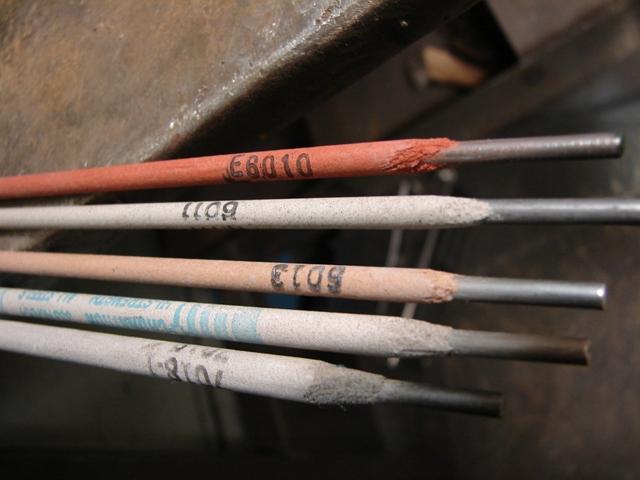6011 welding rods Question:
Can you make multiple passes with 1/8" 6011 welding rods without compromising strength of the weld or should you use a larger rod?

Answer to 6011 welding rod question
Multiple pass welds with in the Pipe welding industry are very commonplace. Most pipeline welds are made with multiple passes of 6010 welding rods.
6011 rods are the cousin of 6010 welding rods. Almost identical in mechanical properties but they are designed to run on A/C as well as DC welding current.
I used to work in the Power piping and construction industry where support structures for main steam pipelines would require welds that were just plain huge and took 40 to 50 passes. Typically, 1/8 to 5/32 7018 electrodes were used.
6011 rods are great all purpose rods for general repair and fabrication. A lot of people are not aware that 6011 3/32 welding rods are also available. You can even get 1/16 6011 rods if you go to the welding supply and not Home Depot or the Auto Parts store.
1/16 6011 rods are really useful for 2 things:
1. Welding thin sheet metal, like auto body work. Seriously, they are as good as a flux core 115 volt MIG welder,(if you are pretty good at Stick welding)
2. They are also really good if your Arc welder is a little on the wimpy side. Like an Arc welder that runs on 115 volts. The 1/16 6011 rods start easier and weld sheet metal much easier than the bigger diameter 6011 rods.
Something else that comes to mind is 5/32 6011 rods.
A Lincoln 225 amp buzz box is perfectly capable of burning 5/32 rods.
I welded a metal rack once with nothing but a Lincoln A/C 225 buzz box and some 5/32 6011 welding rods. The metal had been sitting outside and was rusty and about 3/8 thick. Those 5/32 6011 rods penetrated thru the rust easily and made some really decent looking welds.
Years later, that metal rack is still holding about 6000 pounds of metal bar stock in a machine shop.
Now remember, 6011 rods will not be as pretty as 6013. I take heat for this on occasion but I just do not like 6013 rods. Sometimes they work great, but other times they fool you and you have a line of slag right down the middle of the bead. I would rather have rough ripples and a good bead every time. That is why I prefer 6011. Here is a quote from the Army Welding Manual that just adds to my explanation:
(e) There is another quality problem associated with extremely large single-pass weld deposits. When these large welds solidify, the impurities in the melted base metal and in the weld metal all collect at the last point to freeze, which is the centerline of the weld. If there is sufficient restraint and enough impurities are collected at this point, centerline cracking may occur. This can happen when making large single-pass flat fillet welds if the base metal plates are 45 degrees from flat. A simple solution is to avoid placing the parts at a true 45 degree angle. It should be varied approximately 10 so that the root of the joint is not in line with the centerline of the fillet weld. Another solution is to make multiple passes rather than attempting to make a large weld in a single pass.
leave this page on 6011 welding rods and see more stick welding tips
Not seeing what you searched for? The best way to find something on this site is to use this Search Tool.
















